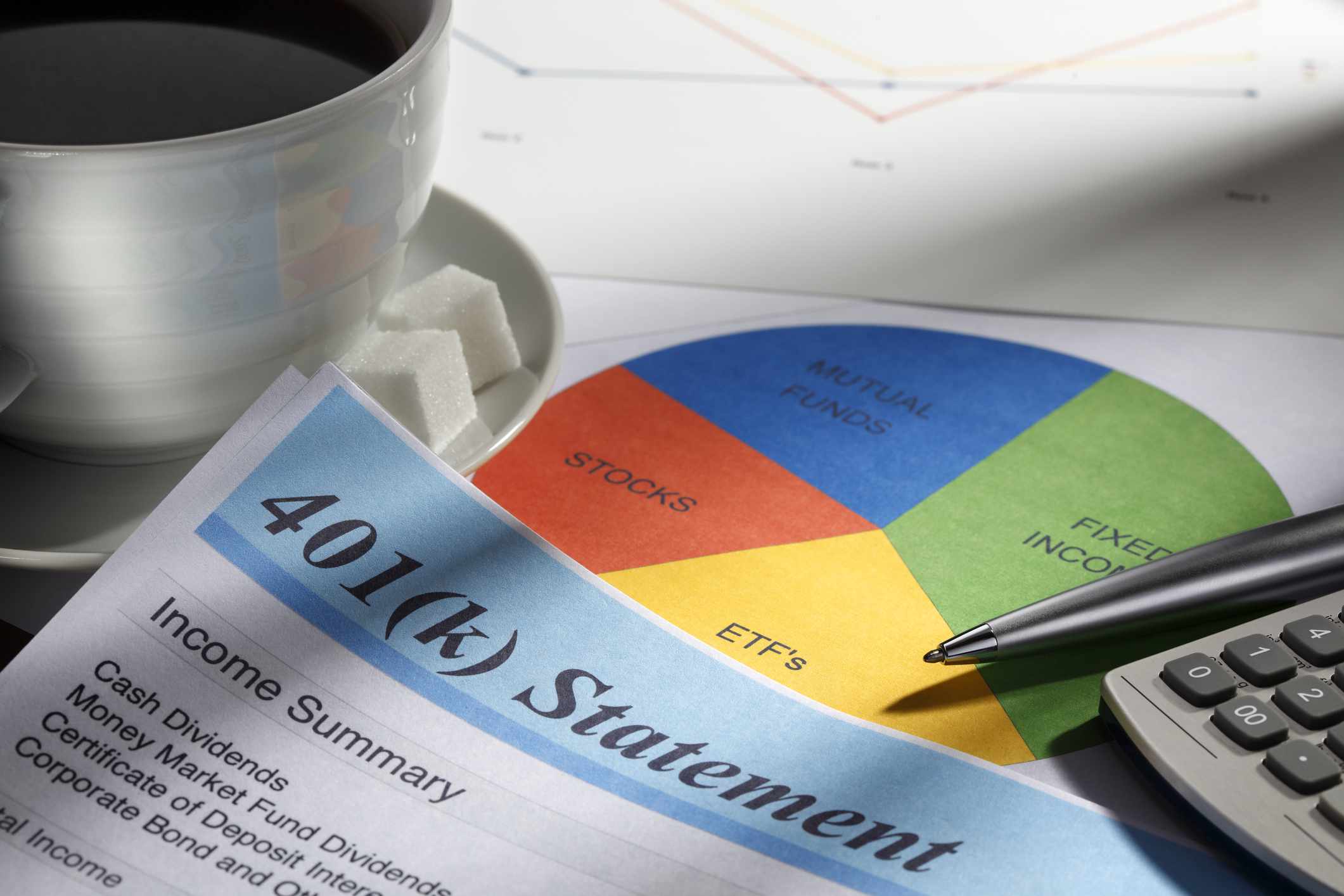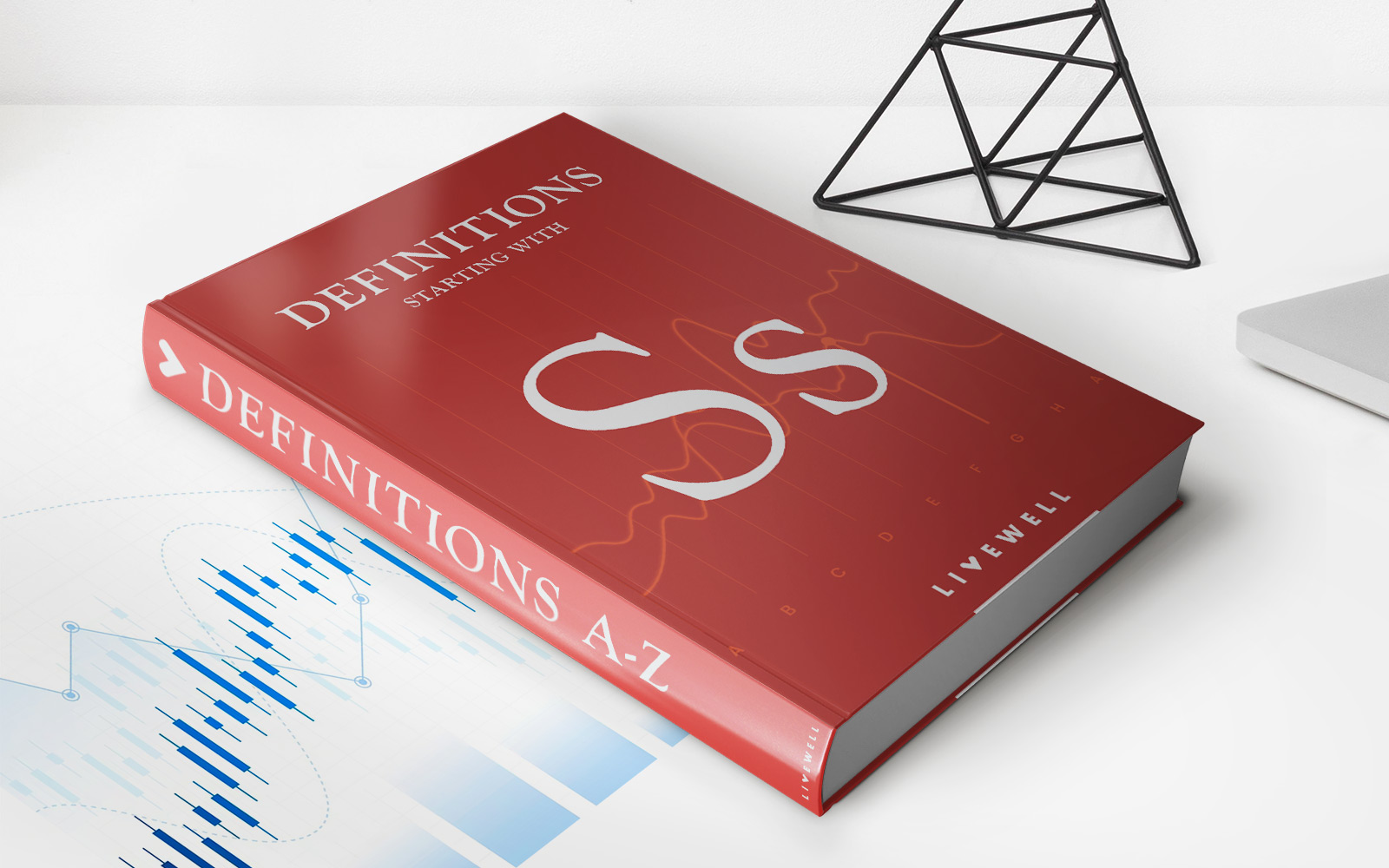

Finance
How Long Does It Take To Process A 401K Loan
Published: October 15, 2023
Discover how long it takes to process a 401K loan in the world of finance. Plan your finances wisely and make informed decisions with expert guidance.
(Many of the links in this article redirect to a specific reviewed product. Your purchase of these products through affiliate links helps to generate commission for LiveWell, at no extra cost. Learn more)
Table of Contents
Introduction
When facing a financial emergency or in need of funds for a major expense, some individuals turn to their 401K retirement savings as a potential lifeline. One option available is to take out a 401K loan, which allows individuals to borrow against the balance in their retirement account. However, before diving into the details of the loan processing timeline, it is crucial to understand what a 401K loan is and its eligibility criteria.
A 401K loan is a borrowing option that allows individuals to access a portion of the funds in their 401K retirement account for various purposes, such as paying off debt, covering medical expenses, or financing a home renovation project. Unlike traditional loans, 401K loans do not require a credit check, as the individual is essentially borrowing from their own retirement savings. The interest on the loan is paid back into the individual’s own 401K account, making it a unique borrowing option.
To be eligible for a 401K loan, individuals must be employed by a company that offers a 401K plan and have funds available in their retirement account. Additionally, the individual must meet the requirements set by their employer’s 401K plan, which may include minimum loan amounts, limits on the number of loans allowed, and specific terms for repayment.
Now that we understand the basics of a 401K loan and its eligibility, let’s explore the typical timeline for processing these loans and the factors that can affect the processing time.
What is a 401K Loan?
A 401K loan is a borrowing option that allows individuals to access a portion of the funds in their 401K retirement account. It provides an opportunity to borrow against the balance in the account for various purposes, such as paying off debt, covering medical expenses, or financing a major purchase.
Unlike traditional loans, 401K loans do not require a credit check, as individuals are essentially borrowing from their own retirement savings. The interest on the loan is paid back into the individual’s own 401K account, making it an intriguing borrowing option for those in need of immediate funds.
These loans have specific rules and regulations that govern them. The maximum loan amount that can be borrowed is typically the lesser of $50,000 or 50% of the vested balance in the individual’s 401K account. However, some plans may impose lower limits, so it is important to check with your employer’s 401K plan to determine the exact loan amount available to you.
Repayment of the loan is typically done through payroll deductions, meaning that the loan amount, along with interest, is deducted directly from the individual’s paycheck. The repayment period for a 401K loan is usually five years, although some plans may allow for longer repayment terms if the loan is used for purchasing a primary residence.
It is important to note that 401K loans are not without their risks and considerations. If an individual fails to repay the loan as agreed, the outstanding balance may be treated as a distribution, subjecting them to taxes and potentially early withdrawal penalties. Additionally, if the individual leaves their job, the remaining balance on the loan may become due in a short period, which could create financial strain. Therefore, careful consideration should be given to the potential consequences before taking out a 401K loan.
Now that we have a better understanding of what a 401K loan is and how it functions, let’s explore the eligibility criteria for obtaining one.
Eligibility for a 401K Loan
Before taking out a 401K loan, it is important to understand the eligibility criteria set by your employer’s 401K plan. While the specific requirements may vary from plan to plan, there are some common criteria that individuals must meet to be eligible for a 401K loan.
First and foremost, you must be an active participant in your employer’s 401K plan. This means that you must be currently employed by a company that offers a 401K retirement savings plan. If you are not enrolled in the plan, you will need to discuss with your employer how to become eligible for participation.
Once you are an active participant in the 401K plan, you need to check the plan’s rules regarding loans. Some plans may not offer loan options at all, while others may have specific guidelines and limitations in place. For example, the plan may impose a minimum loan amount, meaning you can only borrow above a certain threshold. Additionally, there may be restrictions on the maximum loan amount you can borrow, often capped at the lesser of $50,000 or 50% of your vested balance.
Furthermore, some plans may limit the number of loans you can have outstanding at any given time. This means that if you have an existing 401K loan, you may need to wait until it is fully repaid before applying for another one.
Lastly, it is crucial to review the plan’s repayment terms. Most 401K loans have a repayment period of five years, although exceptions may be made if the loan is used for purchasing a primary residence. The plan may also specify the frequency of loan repayments, typically through regular payroll deductions.
It is essential to thoroughly review your employer’s 401K plan document and consult with the plan administrator or human resources department to understand the specific eligibility requirements and loan terms. By ensuring that you meet the necessary criteria, you can determine if a 401K loan is a viable option for your financial needs.
Now that we understand the eligibility criteria, let’s delve into the typical timeline for processing a 401K loan.
Loan Processing Timeline
The processing time for a 401K loan can vary depending on several factors, including the specific rules and procedures of your employer’s 401K plan. Generally, the loan processing timeline consists of several steps that need to be completed before the loan is disbursed.
The first step is to complete the loan application. This typically involves filling out a form provided by your employer or the plan administrator. The application will require you to provide details such as the loan amount you want to borrow, the purpose of the loan, and the desired repayment term.
Once your loan application has been submitted, it will undergo a review process. The plan administrator or the designated department will assess your eligibility based on the plan’s loan rules and requirements. They may verify your employment status and confirm the availability of funds in your 401K account.
After the review process, the loan is sent for documentation and legal preparation. This step involves generating loan documents that outline the terms and conditions of the loan, including the interest rate, repayment schedule, and any applicable fees.
Once the loan documents are prepared, you will be required to review and sign them. This is an important step as it signifies your agreement to the loan terms and your commitment to repay the borrowed amount. Make sure to carefully read through the loan documents and seek clarification on any unclear terms before signing.
After you have signed the loan documents, they will be returned to the plan administrator for final processing. The administrator will verify that all necessary paperwork is in order and that the loan terms align with the plan’s guidelines. They will also ensure that the loan amount requested does not exceed the maximum allowed limit.
Finally, once the loan has been approved and all the necessary checks have been completed, the funds will be disbursed to you. The disbursement method can vary depending on the plan, but it is typically done through direct deposit into your bank account or by issuing a check.
The entire loan processing timeline can take anywhere from a few days to a few weeks, depending on the efficiency of the plan administrator and any additional administrative processes that need to be completed.
It is important to note that the specific timeline for processing a 401K loan may differ from one employer’s plan to another. Therefore, it is advisable to consult with the plan administrator or human resources department of your employer to get a more accurate estimate of the processing time for 401K loans.
Now that we have discussed the loan processing timeline, let’s explore the factors that can affect the processing time.
Factors Affecting Processing Time
The processing time for a 401K loan can be influenced by various factors, which can impact how quickly your loan request is reviewed and approved. Understanding these factors can help manage your expectations and ensure a smoother loan processing experience.
1. Employer’s 401K Plan: Each employer’s 401K plan may have its own set of rules and procedures for loan processing. Some plans may have streamlined processes and dedicated personnel to handle loan requests, resulting in faster processing times. Others may have more complex systems or limited staff, leading to potential delays.
2. Loan Volume: The number of loan applications being processed at a given time can affect the overall processing time. If there is a high volume of loan requests, it may take longer for the plan administrator to review and approve them. Similarly, during certain peak periods, such as the end of the year or quarter, processing times may be extended due to increased workload.
3. Documentation Accuracy: Providing accurate and complete documentation is crucial for a smooth and timely loan processing. If any required information or supporting documents are missing or incorrect, it can lead to delays as the plan administrator may need to follow up with you for the necessary paperwork.
4. Communication Channels: Efficient communication between you, the plan administrator, and the loan processing team is essential. If there are delays in responding to inquiries or providing additional information requested by the plan administrator, it can prolong the processing time. Stay proactive and responsive throughout the loan application process.
5. Plan Restrictions: Some 401K plans may have specific restrictions or additional requirements for certain types of loans. For example, if the loan is intended for purchasing a primary residence, there may be additional documentation or approvals needed. These extra steps can add to the overall processing time.
6. Internal Policies: Apart from the 401K plan’s rules, your employer may have internal policies or procedures that impact the loan processing time. These could include additional layers of approval or reviews from other departments within the company, which might introduce delays into the process.
It is important to note that while these factors can influence the loan processing time, they do not necessarily indicate a lengthy or cumbersome process. Many 401K loans are processed within a reasonable timeframe, especially when all required documentation is provided promptly and accurately.
By understanding the factors that can affect the processing time, you can be better prepared and take appropriate steps to expedite the loan processing. Now that we have covered the factors influencing the loan processing time, let’s move on to the documentation required for a 401K loan.
Required Documentation
When applying for a 401K loan, you will need to provide certain documentation to support your loan request. The specific documentation required may vary depending on your employer’s 401K plan, but here are some common documents that are typically needed:
1. Loan Application Form: You will need to fill out a loan application form provided by your employer or the plan administrator. This form includes details such as the loan amount requested, purpose of the loan, and desired repayment term.
2. Proof of Employment: You may be required to provide proof of employment, such as a pay stub or a letter from your employer, to confirm your current employment status and eligibility for a loan.
3. Identification Documents: You will typically need to provide a valid form of identification, such as a driver’s license or passport, to verify your identity.
4. 401K Account Statements: You will need to submit recent statements of your 401K account, showing the vested balance available for borrowing. This helps the plan administrator determine the maximum loan amount you are eligible for.
5. Loan Agreement or Promissory Note: Once your loan request is approved, you will be required to review and sign a loan agreement or promissory note. This document outlines the terms and conditions of the loan, including the interest rate, repayment schedule, and any applicable fees.
6. Direct Deposit Information: If your approved loan amount is to be disbursed through direct deposit, you may need to provide your bank account details, such as the account number and routing number.
It is important to note that these are general documents that are typically required for a 401K loan. However, the specific documentation and requirements may vary depending on your employer’s 401K plan. It is advisable to consult with the plan administrator or human resources department for the exact documentation needed.
Make sure to provide accurate and complete documentation to avoid any delays or complications in the loan processing. Double-check all the required forms and paperwork before submitting them to ensure a smooth and efficient loan application process.
Now that we have covered the required documentation, let’s move on to discussing the repayment options and terms for a 401K loan.
Repayment Options and Terms
Repaying a 401K loan is an essential aspect of the borrowing process. Understanding the repayment options and terms is crucial to ensure that you meet your repayment obligations and avoid any penalties or adverse consequences.
1. Repayment Period: The repayment period for a 401K loan is typically five years, although some plans may allow for longer repayment terms if the loan is used for purchasing a primary residence. It is important to note that the repayment period starts from the date the loan is disbursed, not from the date of approval or application.
2. Repayment Method: Repayment of a 401K loan is typically done through regular payroll deductions. This means that the loan repayment amount, along with the interest, is deducted directly from your paycheck. The deductions are usually made on a pre-tax basis, reducing the impact on your take-home pay.
3. Interest Rates: The interest rate for a 401K loan is typically set by the plan administrator or the employer, and it is usually lower than the rates offered by traditional lenders. The interest charged on the loan is paid back into your own 401K account, which can help mitigate the impact of borrowing from your retirement savings.
4. Early Repayment Options: In some cases, you may have the option to make early repayments or pay off the loan in full before the end of the designated repayment period. However, it is essential to check with your plan administrator to understand if there are any restrictions or penalties associated with early repayment.
5. Consequences of Default: Failing to repay a 401K loan as agreed can have significant consequences. If you default on the loan, the outstanding balance may be treated as a distribution, subjecting you to income taxes and potentially early withdrawal penalties if you are under the age of 59 ½. This can have a negative impact on your retirement savings and overall financial situation.
It is essential to carefully review the repayment options and terms of your specific 401K loan before accepting the loan. Consider the impact on your current and future financial situation, including your retirement savings goals, and evaluate whether the loan is the right choice for your needs.
Keep in mind that while a 401K loan may offer convenience and lower interest rates compared to other borrowing options, it is still a financial obligation that should be approached responsibly. Make sure to budget for the loan repayments and prioritize meeting your repayment obligations to protect your retirement savings.
Now that we have covered the repayment options and terms, let’s discuss some potential risks and considerations associated with 401K loans.
Potential Risks and Considerations
While 401K loans can be a useful financial tool in certain circumstances, it is important to be aware of the potential risks and considerations before deciding to take one out.
1. Impact on Retirement Savings: Borrowing from your 401K means taking funds out of your retirement savings, which can hinder the growth potential of your account. The money you borrow may miss out on potential market gains, especially if the borrowed amount is not reinvested in a timely manner.
2. Loan Repayment: Failing to make regular loan repayments can result in severe consequences. If you default on the loan, the outstanding balance may be treated as a distribution, subjecting you to income taxes and potentially early withdrawal penalties. This can significantly reduce your retirement savings and may disrupt your long-term financial plan.
3. Restrictive Loan Terms: Some 401K plans may impose restrictions on loan amounts, limiting your borrowing capacity. Additionally, certain plans may have specific rules on the frequency and number of loans allowed. It is important to review your plan’s terms and assess whether they align with your borrowing needs.
4. Potential Job Change: If you leave your job while having an outstanding 401K loan, the remaining loan balance may become due within a short period. If you are unable to repay the loan in full, it can result in financial strain and potential tax implications.
5. Opportunity Cost: Borrowing from your 401K means potentially missing out on other investment opportunities. It is essential to consider the potential returns and benefits you may be sacrificing by using your retirement funds for other purposes.
6. Reduced Retirement Contributions: While repaying a 401K loan, your contributions to the retirement account may be temporarily halted or reduced. This can impact your long-term retirement savings goals, as you may miss out on valuable contributions and potential employer matching contributions.
It is crucial to carefully weigh the potential risks and considerations against your current financial needs and goals before deciding to take out a 401K loan. Consider exploring alternative borrowing options or seeking financial advice to determine the best course of action for your specific situation.
Now that we have discussed the potential risks and considerations, let’s wrap up our discussion on 401K loans.
Conclusion
401K loans can provide a valuable source of funds in times of financial need, allowing individuals to borrow against their own retirement savings without the need for a credit check. However, it is important to approach these loans with careful consideration and awareness of the potential risks and implications.
Before taking out a 401K loan, ensure that you meet the eligibility criteria set by your employer’s 401K plan. Review the loan processing timeline and factors that can affect the processing time to manage your expectations.
Provide accurate and complete documentation to expedite the loan processing and carefully review the repayment options and terms. Understand the potential impact on your retirement savings and consider the risks associated with defaulting on loan repayments.
Although 401K loans can be a convenient borrowing option, weigh the potential risks and consider the opportunity cost of using retirement funds for immediate financial needs.
Consult with your plan administrator or seek financial advice to understand the specific details and implications of a 401K loan in your situation. Ensure that taking a 401K loan aligns with your long-term financial goals and does not jeopardize your retirement savings and future financial security.
Remember, while a 401K loan can offer temporary relief, it is essential to carefully evaluate your options and make informed decisions that support your overall financial well-being.
Now that you have a comprehensive understanding of 401K loans, you can make an informed decision based on your individual circumstances and financial goals.














